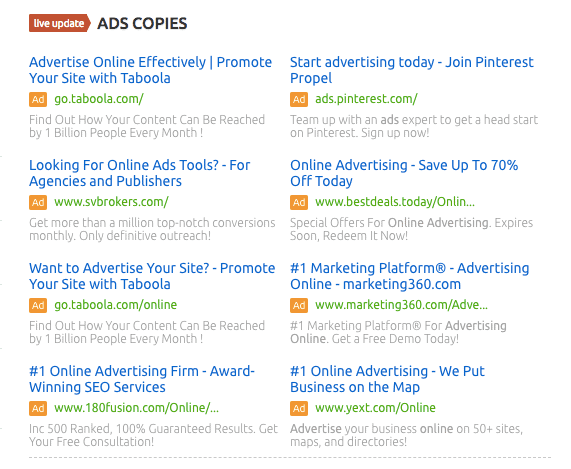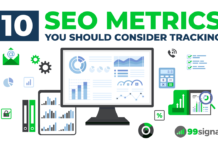 Meta descriptions don't have a direct impact on search rankings. As a result, some SEO professionals have a tendency to ignore them while optimizing web pages.
Meta descriptions don't have a direct impact on search rankings. As a result, some SEO professionals have a tendency to ignore them while optimizing web pages.
Big mistake!
Meta descriptions may not affect organic rankings, but they have a huge impact on a page's CTR (click-through rate) on Google. If your page has a high CTR, it will positively impact the search rankings of that page on Google.
Download Now: The Ultimate Guide to Link Building – 25 Actionable Strategies to Build High Quality Backlinks [Free eBook]
For this reason, among many others, meta description optimization is one of the most important aspects of on-page SEO.
In this article, we'll reveal 5 simple meta description tips that will help you improve your CTR and increase organic traffic.
Table of Contents
1. Write Unique Meta Descriptions for Each Page
Google loves unique meta descriptions.
This is what the company says about good meta descriptions:
"Wherever possible, create descriptions that accurately describe the specific page. Use site-level descriptions on the main home page or other aggregation pages, and use page-level descriptions everywhere else."
Having unique meta descriptions is even more important for all the critical pages on your website, such as the home page, category pages, product pages, and top performing blog posts.
So be sure to put some effort into creating a unique meta description for each page.
2. Use Action-Oriented Copy
You should treat each meta description as a call-to-action. Try to use action-oriented language in your meta description which informs the user what they can expect by visiting your page. Consider using proven CTA words such as "explore", "discover", "get started", or "sign up free".
Here's an example of a meta description that uses action-oriented copy:
3. Use Your Focus Keywords
Make sure your meta description includes focus keywords for that page. Use keywords that are relevant to your page's content, but ensure that you don't stuff your meta description with keywords. Use just the right amount of keywords and aim at persuading the user to click on the link.
Here's a meta description example from Moz that leverages the focus keywords – "link building tips":
If your meta description doesn't align with your page's content, then Google will be forced to use the first sentence with the keyword in the meta description column. Such meta descriptions are often out of context and do nothing to improve your CTR.
4. Leverage the Character Limit
For a long time, the SEO best practice was to keep your meta descriptions within 156 characters. All that changed when Google announced the new character limit for snippets and meta descriptions. Now the recommended length for a meta description is between 300-320 characters.
[Update: In May 2018, Google reduced the character limit for meta descriptions once again. Danny Sullivan, Google's public liaison of search, confirmed on Twitter that Google's search snippets were now shorter. However, there is no fixed limit for snippets. The length will vary based on what systems deem to be most useful. That said, most SEOs agree that the ideal meta description character length is between 155 to 170 characters.]
This change doesn't mean you need to revisit your old posts and change meta descriptions. Sometimes, shorter meta descriptions make more sense than longer ones.
But just be cognizant of the new limit while writing your meta descriptions to take full advantage of it wherever necessary.
5. Copy PPC ads
Most advertisers optimize their PPC ads for maximum clicks. So it goes without saying that you can learn a lot by taking a look at your competitors' PPC ads.
This is where a tool like Semrush can help by allowing you to take a sneak peek into your competitors' PPC ad strategies, including ad copies.
If you have an active
Here's how you can analyze your competitors' ad copies on
Login to your
Semrush will return with an overview of the keywords. Scroll down to check out the ad copies which are currently live for the target keywords.
But for a more detailed report, click on the 'Ads History' menu tab to see the ad copies used by various domains in the last 12 months for the target keywords.
This analysis will give you a fair idea as to how to create a meta description that generates maximum clicks.
Side note:
Conclusion
You can help your website stand out in search engine result pages (SERPs) by optimizing your meta descriptions. Use the meta description tips outlined here to improve your CTR, traffic, and conversions.
Related Articles














Length of meta Description got reverted back 😀
from 300 Chars something back to something like 140-160 characters. Better update your article and your Yoast plugin 😉
Thanks for the heads-up, Axel.🙂 We've updated the article!